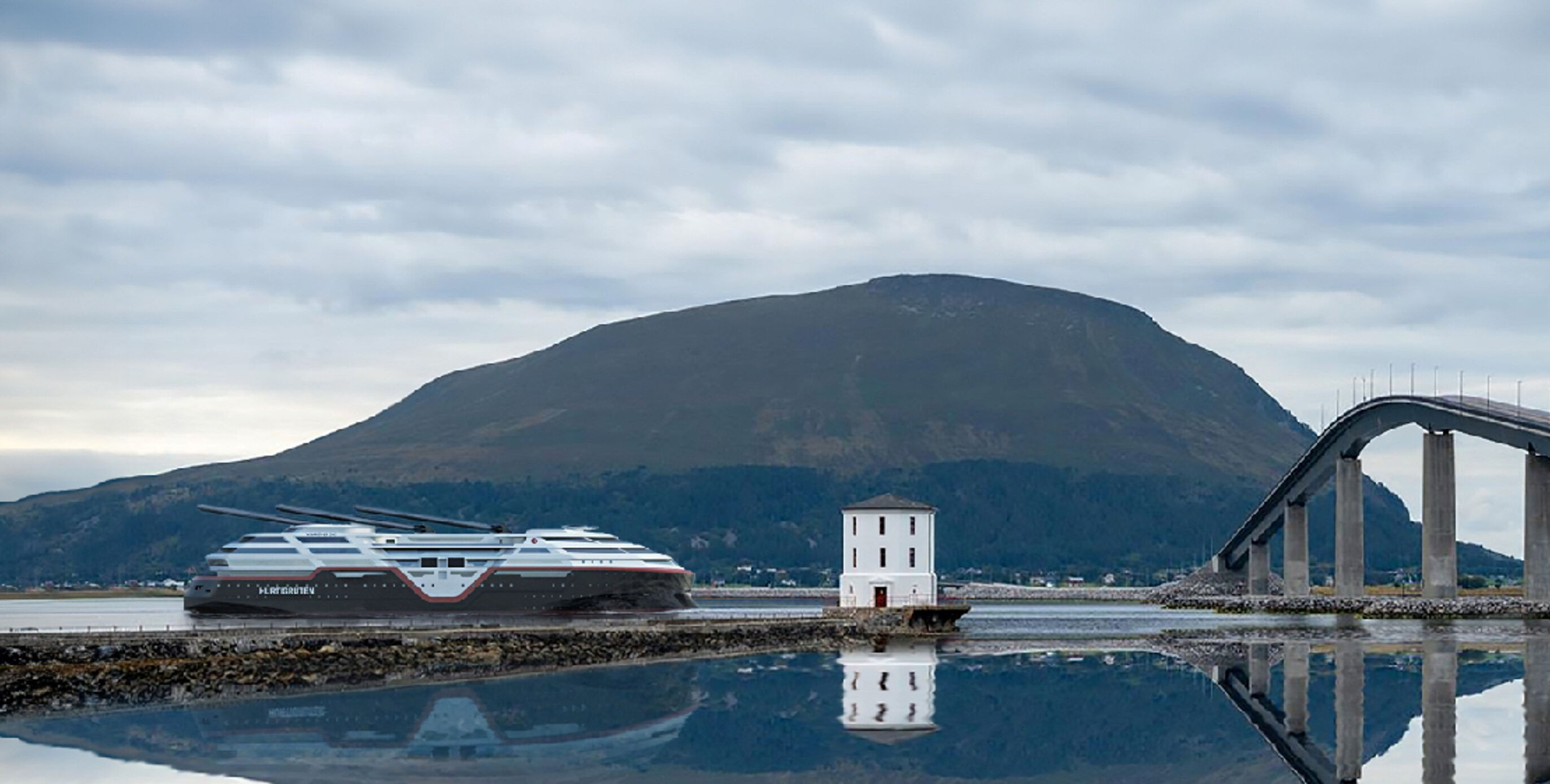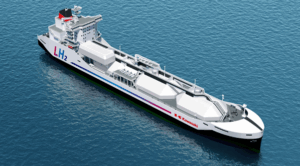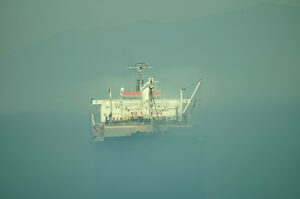An important SeaZero project design of the second version of the future coastal cruising ship which will be able to sail entirely emission-free during normal operation along the Norwegian coast, with the help of large batteries, sails and other innovative solutions, has been revealed by Hurtigruten and Vard.
The second version is now even more advanced, with calculations showing that the ship will use about 40-50 percent less energy than today’s ships – which makes it possible to operate primarily on batteries as the main energy source.
Developed by Vard, one of Hurtigruten’s key partners in the SeaZero-project, the ship is planned with contra-rotating propellers as the main propulsion, and the batteries will have a capacity of around 60 megawatt-hours.
Two retractable thrusters at the stern will ensure optimal maneuvering during port operations.
“The central part of the project is to reduce energy consumption. The goal is to use significantly less energy than today’s ships, which requires innovative solutions,” said Gerry Larsson-Fedde, chief operating officer of Hurtigruten.
As it is reported by Vard, the sails can be raised and lowered as needed. Preliminary estimates indicate that the sails could reduce energy consumption by around 10 percent over time.
Additionally, solar panels will contribute another 2-3 percent in energy savings.
The type of sail being investigated is called OceanWings. These French-developed sails are already in use on the cargo ship Canopée.
Another measure is air lubrication of the hull, where air bubbles are pumped beneath the hull to reduce drag. According to Vard, this can provide energy savings of 5-10 percent.
Furthermore, “smart cabins” will allow guests to control their own energy usage. Through an app and a screen in the cabin, guests can control heating and ventilation, while also seeing how much energy is being used.



